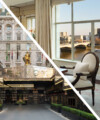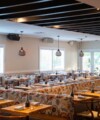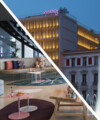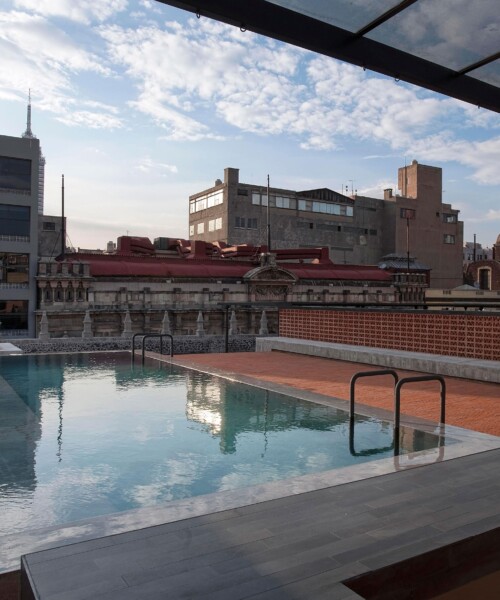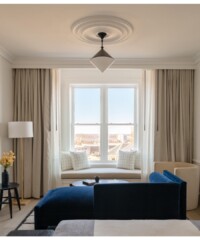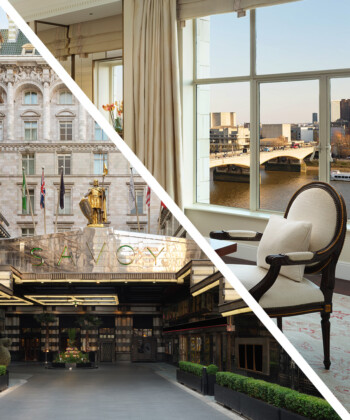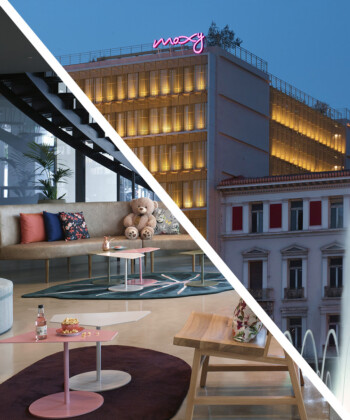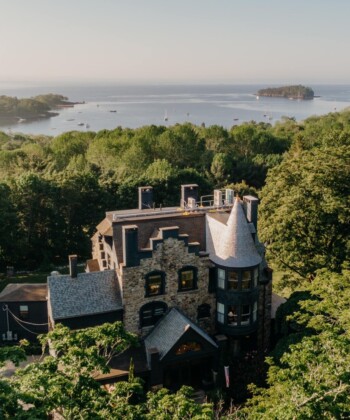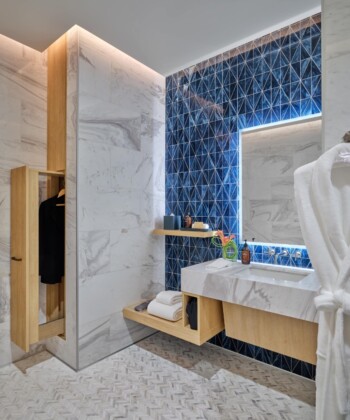Lately you can’t shake a stick without hitting a boutique hotel promising Egyptian cotton linens, Kiehl’s products and flat-screen televisions. But there’s more to luxury than a well-appointed suite. That is why the proprietors at a string of new properties are turning their attention to common areas.
Christian Strobel, a veteran of the Joie de Vivre minichain of luxury hotels, had good times in mind when he opened Basecamp Hotel in South Lake Tahoe, Calif., this summer. The 50-room property underwent a gut renovation, and a once-grim lobby was reborn as the perfect après ski hangout. (The hotel’s previous version catered to the snowboarding crowd with, yikes, an in-room stripper pole and PlayStation consoles.) Now two oversize chesterfields flank a fireplace—an ideal perch to enjoy the Mirror Pond Ale on tap or an artisanal hot chocolate. An 11-foot reclaimed wooden dining table completes the picture. It doesn’t hurt that Basecamp, which features a rooftop hot tub with views of the mountain, is just a few blocks from Lake Tahoe’s Heavenly Gondola; it’s practically ski-in/ski-out.

Basecamp Hotel, Photo by Eva Kolenko

Basecamp Hotel, Photo by Eva Kolenko
The location was crucial to creating the vibe Strobel wanted. “I lived in the French Alps for a year,” he explains. “There everybody goes to après ski at the bottom of the slopes. In Tahoe, most people get in their car—but it’s not that fresh-from-the-slopes experience. We’re bringing a bit of Europe to Tahoe.”
That same let’s-get-this-party-started ethos comes to Cuzco, Peru, this fall, courtesy of local celebrity chef Virgilio Martinez. His new restaurant Senzo is a finca-to-table spot installed in the Palacio Nazarenas, a 16th century convent reborn as a boutique property complete with oxygenated rooms to ward off altitude sickness. Surely the nuns never had it this good.

Palacio Nazarenas

Palacio Nazarenas
“Most of the ingredients we use in Senzo are difficult to find in Lima,” explains Martinez. “We manage to collect food from the source—as our ancestors used to do.” In other words, come for the view of Machu Picchu, but stay for the confit of tubers, made with eucalyptus oil. As for Cuzco’s outdated reputation as a flyover city, the chef laughs: “Machu Picchu is amazing, but of course there is more: the calm mysticism of the Sacred Valley, the landscapes. Being thousands of meters above sea level is a nice way to experience the biodiversity of the Andes.” Taking a breath, he adds: “The nightlife is great, too.”
Sometimes a city is best viewed from above—preferably with a drink in hand. Which makes the rooftop pool and rooms at the 17-suite Downtown Mexico City hotel a welcome addition to the resurgent Mexico City cultural scene. (This fall alone, the Tamayo Museum of Contemporary Art reopens after a two-year remodeling effort and Madonna comes to the Foro Sol arena.) The hotel is situated in a Colonial-era palace, and the architecture firm Cherem Serrano was wise to retain ornate details like a stone-forge staircase to the gray volcanic rock walls. You don’t want to know what it takes to install a pool on the roof of a 17th century building, but standing there with your feet wet, staring out at the 16th century La Profesa Church, it’s clearly worth the effort.

Downtown Mexico City Hotel
Sit poolside. Toma una tequila. You’ll sleep (on 600-thread-count sheets) when you’re dead.




